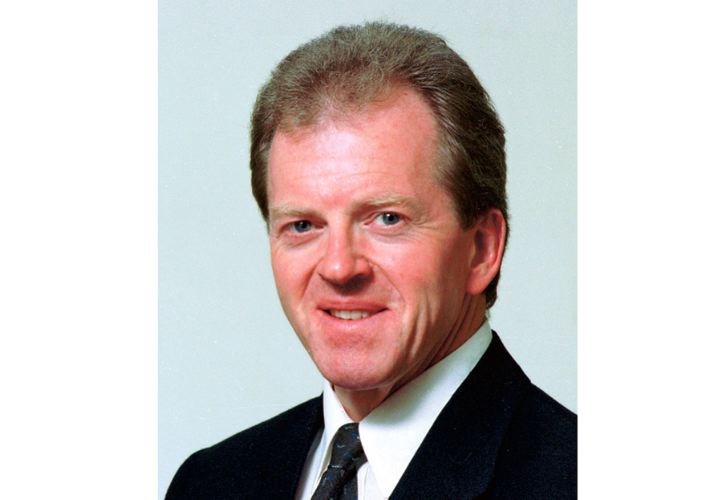VICTORIA -- The electoral boundaries commission weighed in with a preliminary report Thursday that would add two more seats in the Lower Mainland, continuing a shift in voting power that also reflects population trends.
The recommendations from the three-member commission, chaired by B.C. Supreme Court Justice Thomas Melnick, call for new seats in Surrey and Richmond in time for the next election, boosting the house to 87 members from the current 85.
If enacted by the B.C. Liberal government, which is likely, the additions would mean that of the 30 seats added to the house over the past 30 years, 21 were in Vancouver, its suburbs or the Fraser Valley.
Vancouver Island has gained four seats since 1985, the Okanagan three, and the Cariboo-Thompson region two. Both the North and the Columbia-Kootenay region were static over the same stretch.
Those numbers reflect relative population growth, as the province becomes more urbanized in and around Metro Vancouver and the Lower Mainland.
The seat shift would be more pronounced had not successive governments tried to preserve hinterlands representation by limiting the discretion of successive boundary commissions.
In striking the current commission last year, the Liberals precluded it from reducing representation in the North, Columbia-Kootenay and Cariboo-Thompson regions, creating protective enclaves of 17 seats in all.
The end result is a preliminary report that, while proposing to add two seats and shift the boundaries for 49 others, would also preserve some dramatic disparities in representation.
Surrey has gone from two seats in 1985 to eight today and the commission would make it nine. But the Surrey population is roughly double that of the north, which will nevertheless continue to have eight seats under the rules laid down by the Liberals.
In recognition of the challenge representing vast rural ridings, the Canadian courts (unlike those in the U.S.) have permitted significant departures from the principle of equal representation by population.
The general guideline is that the population of a given seat can vary by 25 per cent, upward or downward, from the provincial average and by 50 per cent in exceptional cases.
The commission proposes 10 seats with populations that are below the 25 per cent threshold, and two that are more than 50 per cent under. But in light of court rulings in other provinces, the B.C. exceptions to the 25 per cent guideline might survive a court challenge.
Five of the underpopulated seats are held by the Liberals and the other half (including the two with the smallest populations) are represented by the New Democrats.
The Liberals would appear to have come out ahead in the areas where the commission is moving to redress under-representation. Nor would it be surprising if the faster growing parts of the province were more inclined to support the government.
Of the seven ridings where the current population exceeds the average by more than 25 per cent, six are represented by the Liberals: two in Surrey, two in Richmond and two in Langley. The NDP-held exception is New Westminster.
The commission recommended adding one seat on the Cloverdale side of Surrey. It boosted the Richmond population by poaching the Queensborough district from New West, then added a seat in central Richmond. And it redressed the population imbalance in Langley by pushing the riding boundaries eastward throughout the Valley.
All those changes could benefit the Liberals, presuming the voting patterns from the last election were to hold next time.
The governing party should also be content with the one significant makeover of a seat on Vancouver Island, which would shift some NDP-leaning polls out of the Comox Valley riding, improving the re-election chances of Liberal incumbent Don McRae.
One recommended change that could work in favour of the NDP would shift the community of Hope into the Fraser-Nicola riding while moving Princeton eastward to Boundary-Similkameen.
New Democrat Harry Lali, who held Fraser-Nicola in 2005 and 2009 before losing it to Liberal Jackie Tegart in 2013, is on record as believing that the addition of Hope to his former bailiwick could improve his chances at a comeback.
The full report is now posted on the commission website (bc-ebc.ca) with the public invited to raise objections in writing or at hearings starting next month.
The MLAs will be able to have their say as well, there being few things that politicians are more inclined to protect than the precise boundaries that got them elected to the legislature in the first place.
Based on the first round of submissions to the commission last fall, I expect the most squawking will involve the relocation of Comox, Hope and Queensborough. But with the commission having already defended those shifts as necessary to redress the population balances, I would not expect it to give much ground.
The final report is scheduled to be delivered to the government in the fall, leaving enough time for the recommendations to be enacted and the boundaries recast before the election in May 2017.
Last time out (this was in 2007) the B.C. Liberals second-guessed the boundary commission and imposed a major rewrite on its final recommendations.
But with no red flags apparent in Thursday's preliminary report, I would expect smoother sailing this time.



